Why oat flour? Oat flour is a healthy, fiber-rich alternative to white flour (bonus: it’s gluten-free with certified GF oats).
Homemade oat flour is much less expensive than buying it at the store. Plus, you get to pick the kind of oats you like!
Whether you’re gluten-free or trying to eat more whole foods, oat flour is a great addition to your dishes! And if you ever run out, you can easily make more.
Making your own ingredients at home is fun, fulfilling, and gives you peace of mind! Try it out today.
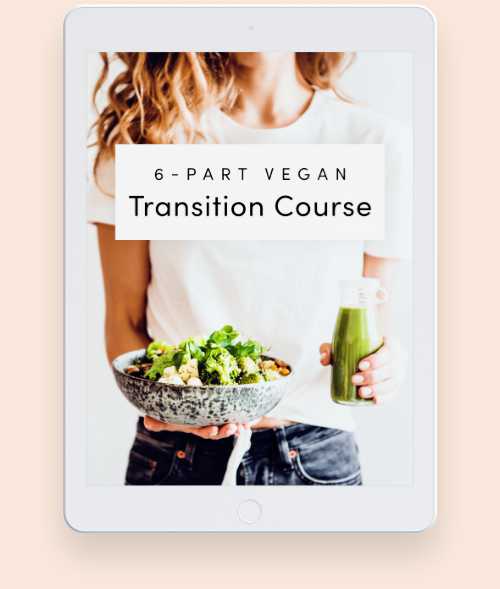
join our free vegan course!
Learn how to thrive on a plant-based diet with practical tips & a 3-day meal plan!
What is oat flour
Oat flour is simply ground oats! It’s a whole-grain flour packed with fiber and micronutrients.
All you need is a high-speed blender to make it. You can use rolled oats or steel-cut — we’ll delve into the differences below.
How to make oat flour at home
Pour your oats into a high-speed blender and blend until they turn into a fine flour. Scrape down the sides if needed.
It’s that simple.
In about one minute, you can have a whole container of oat flour ready to use.
The minimum and maximum amount of oats you can blend is dependent on the size of your blender. However, one cup of oats is a good starting minimum! If you’re making oat flour in bulk, ensure that your blender isn’t overfilled, so the oats process evenly.
Note
We recommend using a blender to make your oat flour, as the food processor does not finely grind the oats as much.

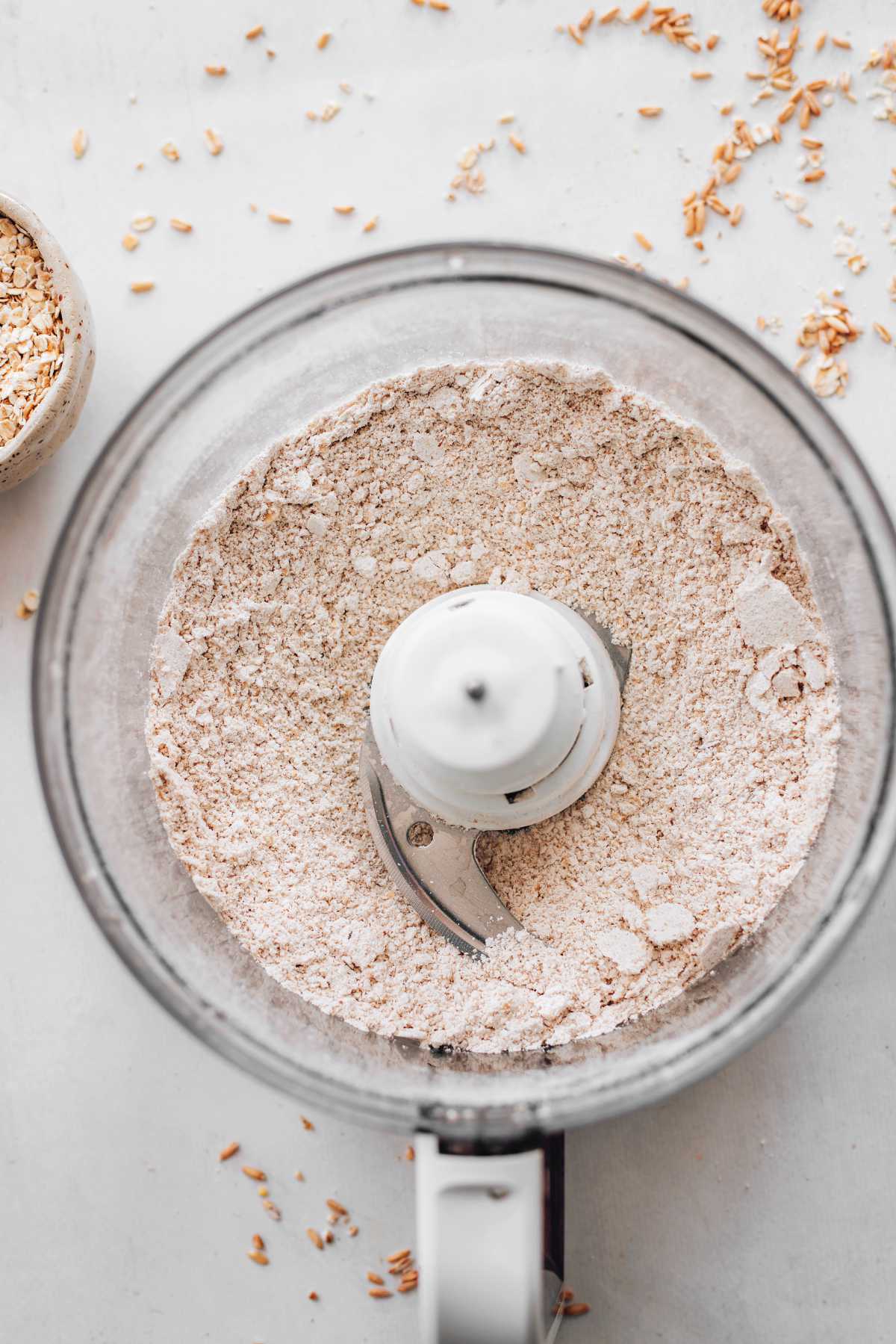
How to make oat flour with rolled oats
Rolled oats transform into a light, soft flour similar to the texture of all-purpose flour. However, oat flour is slightly crumblier. Since rolled oats have a flattened shape, they blend easily.
As instructed above, place your rolled oats in the blender and blend until it becomes flour (about 50-60 seconds).
How to make oat flour with steel-cut oats
Steel-cut oats take longer to blend, but they result in a higher fiber flour! They have a heartier texture than rolled oats (therefore creating a denser consistency).
To make oat flour: add the steel-cut oats to your high-speed blender. Then blend for 45 seconds and scrape down the sides if needed. Continue blending until a powder-like texture forms.
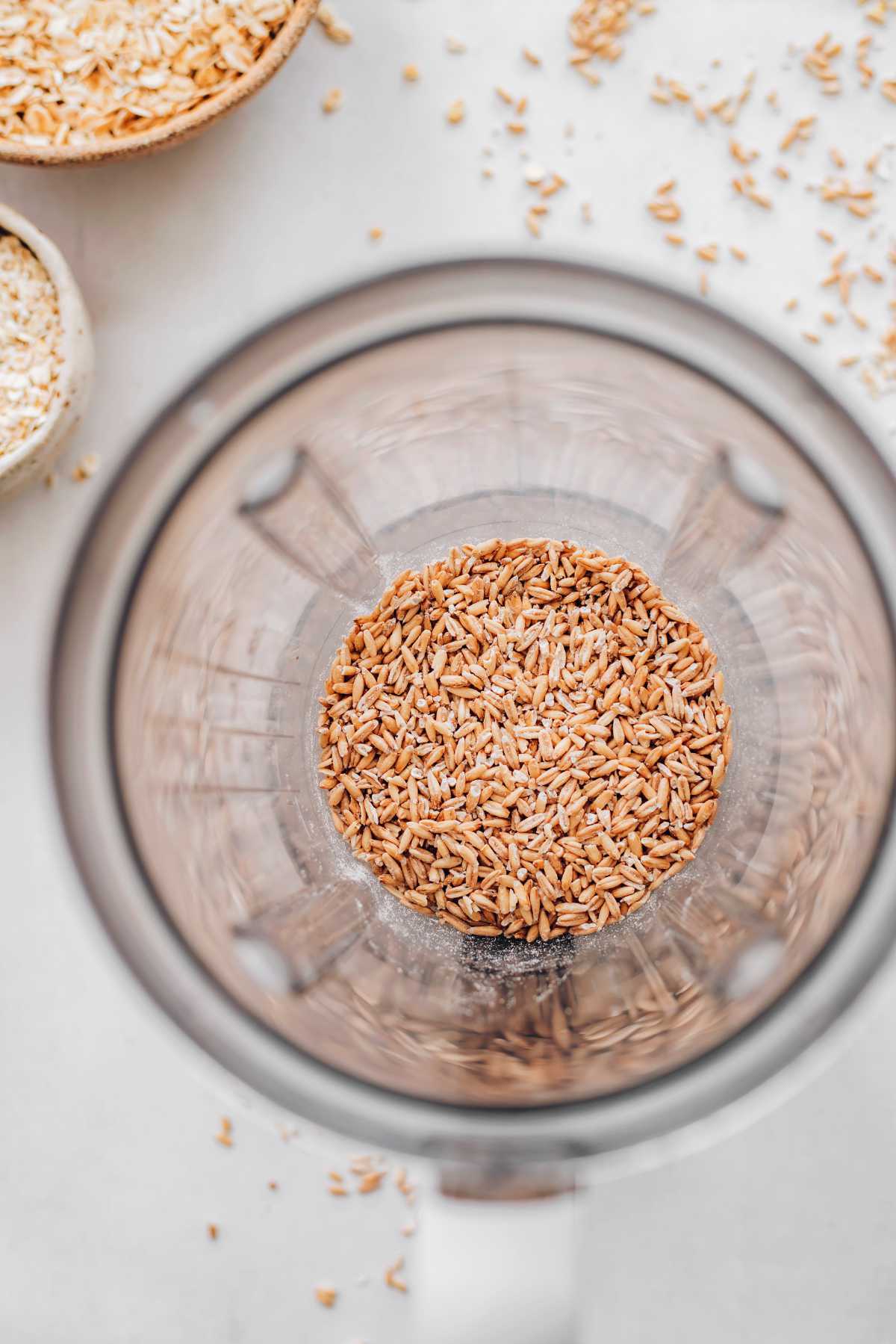
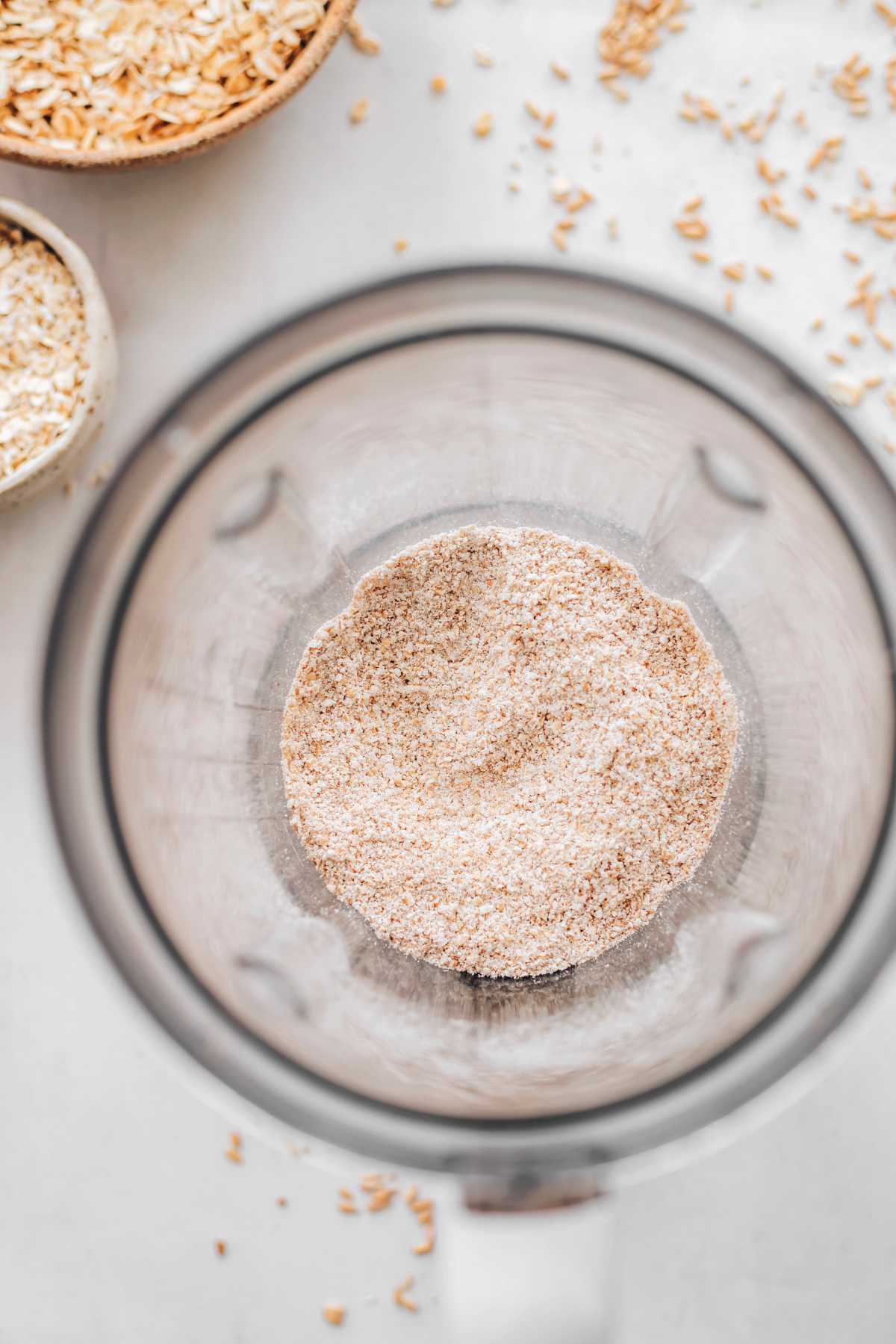
How to store oat flour
Store your oat flour in an airtight container. Place in a cool, dry area for up to 1-2 months (pantry or cabinet is best!)
- Fridge: Lasts up to 3 months.
- Freezer: Lasts up to 6 months.
Since this oat flour contains one ingredient (and no preservatives) it has a shorter shelf life. But since it’s so versatile and delicious, you’ll use it all in no time!
Uses for oat flour
It’s time to celebrate — you can use oat flour in all your favorite baked goods! Oat flour is great in classics such as cookies, brownies, muffins, and more.
Make sure to look for recipes that specifically call for oat flour! It is not a 1:1 replacement for all-purpose flour, given the different density.
Below are some of our favorite recipes using oat flour:
- Healthy Vegan Oat Bars
- Vegan Peanut Butter Oatmeal Cookies
- Sugar-Free Banana Bread
- Healthy Vegan Cornbread
FAQs
Can you make oat flour in a food processor?
If you don’t have a blender, that’s okay — a food processor will work. However, you have to process the oats longer, and the texture will be less fine.
For steel-cut oats, we recommend solely using a blender. Steel-cut oats have a tough outer shell, which can be difficult to blend into a fine flour with a food processor.
What types of oats are there?
There are six types of oats (but not all can be used to make flour):
- Oat Groats — Whole grain oat seed (husk removed). It takes the longest to cook.
- Steel Cut — Smaller cut pieces of oat groats.
- Rolled/Old-Fashioned — Steamed and rolled. The flatter pieces are quicker to cook than steel cut.
- Quick Cook — Rolled oats that are flatter and cut into smaller pieces.
- Instant — Pre-cooked and dehydrated oats. These cook faster than quick-cook oats and are occasionally flavored. They are not recommended for baking recipes.
- Oat Bran — Outer shell of the oat seed, underneath the husk. They have a smoother texture than rolled oats.
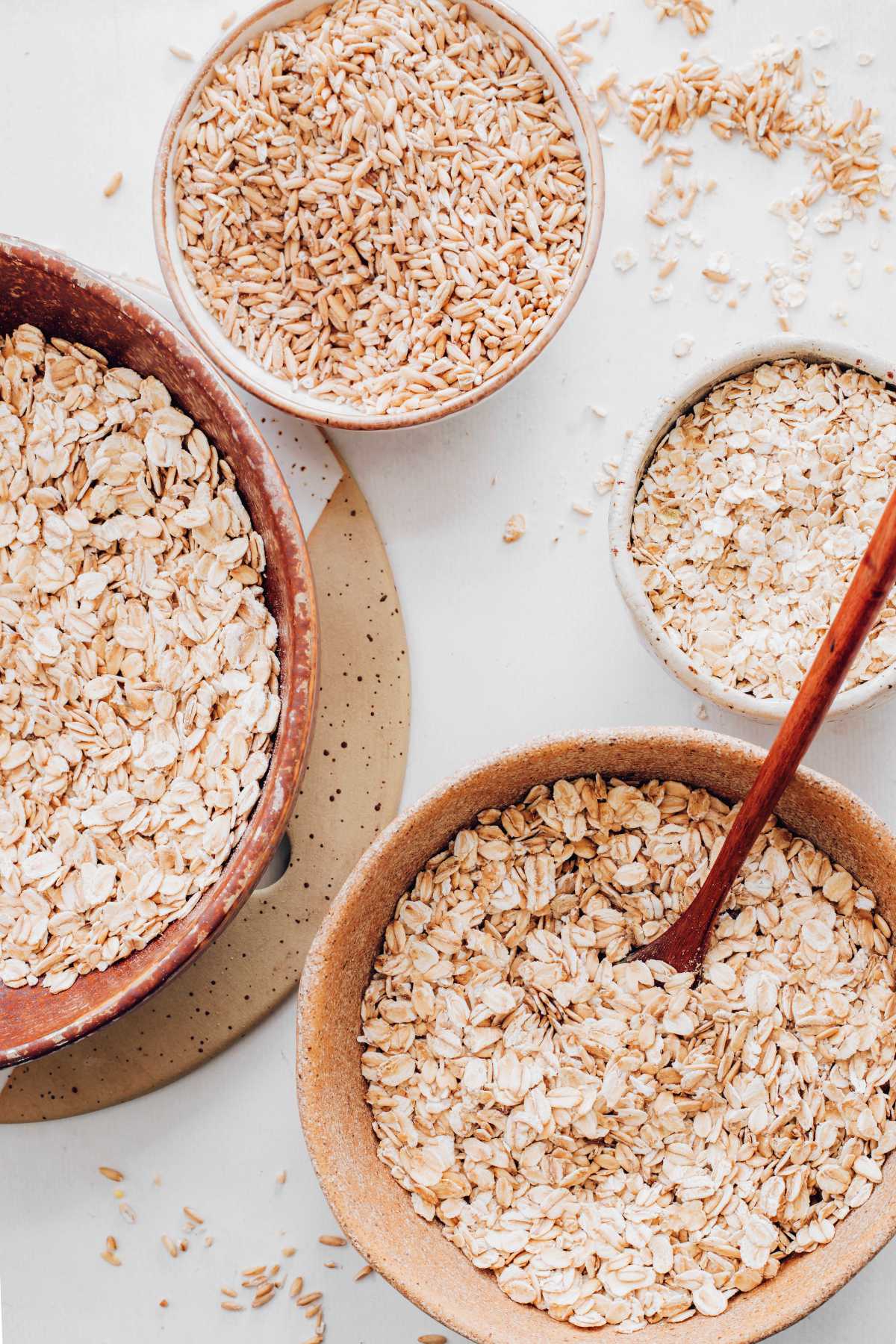
Is oat flour gluten-free?
Yes, as long as the oat flour is made with certified gluten-free oats!
Oats are considered naturally gluten-free in several countries. However, there is a possibility of cross-contact during the production process.
The best route is to find certified gluten-free oats to make homemade oat flour (or you can find certified gluten-free oat flour at the store).
Is oat flour healthy?
Oats, and consequently oat flour, have wonderful nutritional benefits.
The National Library of Medicine states they are high in dietary fiber with a balanced amino acid profile. They’re a great carbohydrate source that’s high in protein.
Plus, oats contain essential micronutrients such as vitamin E, zinc, iron, magnesium, copper, and selenium.
Oats are not only delicious and versatile, but they’re nutritious too!
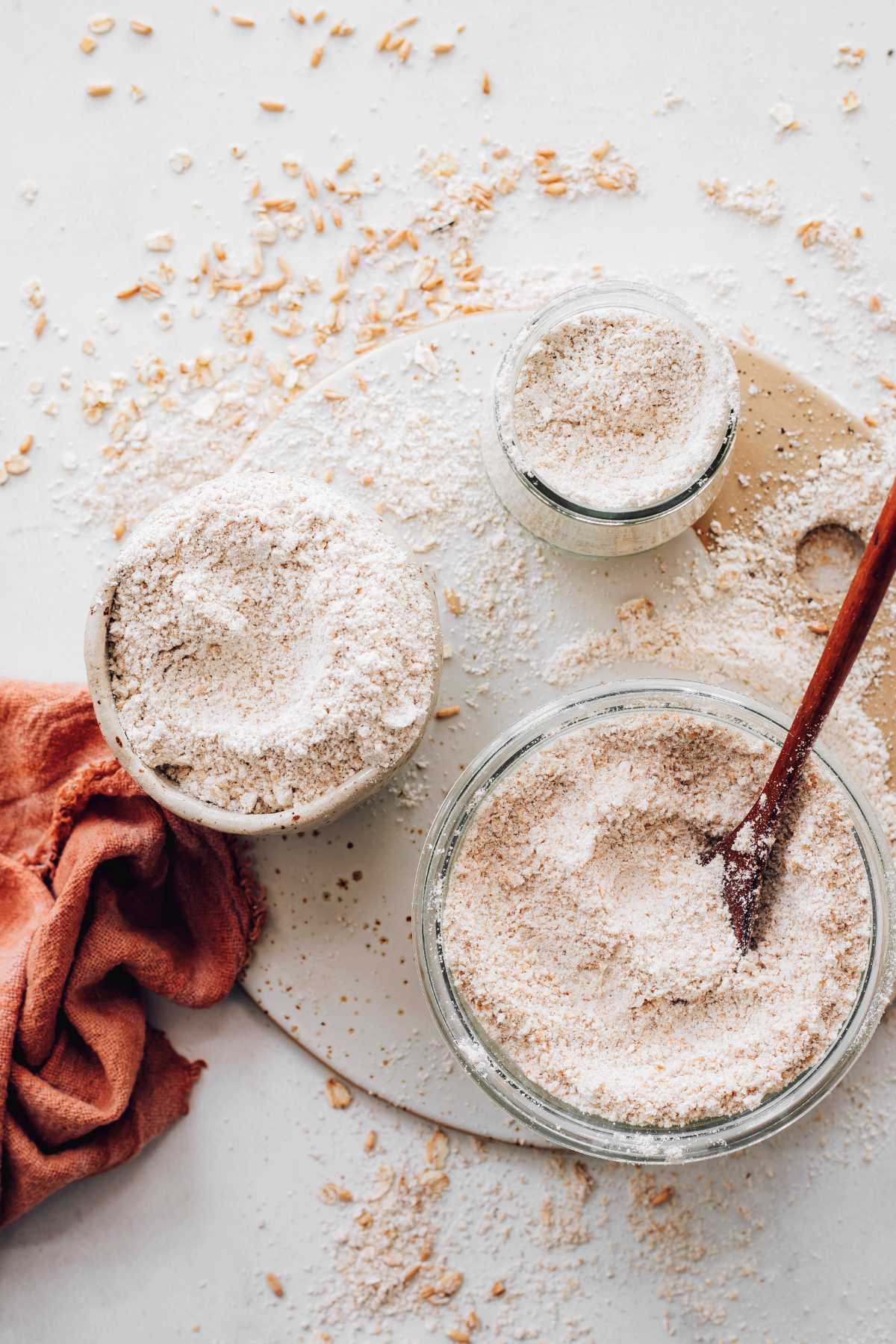
Can you freeze oat flour?
Yes! Place in an airtight container or resealable bag for up to 6 months. Let thaw before use.
How much oat flour equals regular flour?
1 cup of oat flour is approximately 1 ⅓ cup all-purpose.
If you want the most accurate ratio, you can weigh the two flours.
Here are the steps:
- Place an empty bowl on a food scale (tare the scale after you place the bowl)
- Set the scale to grams
- Measure 1 cup of regular flour
- Pour the flour into the bowl
- Record the weight
Hypothetically, let’s say your 1 cup of regular flour = 120 g. That means 120 g of oat flour = 1 cup of regular flour. Easy, right?
Substituting with weight will yield accurate results, so follow weight measurements when you can!
More cooking guides
- How to make almond flour
- How to cook without oil
- How to make bliss balls
- How to make spiralized veggies
- How to cook vegan
Did you find this article helpful? Share with us what you liked the most and any additional tips! You can also Pin this article here.

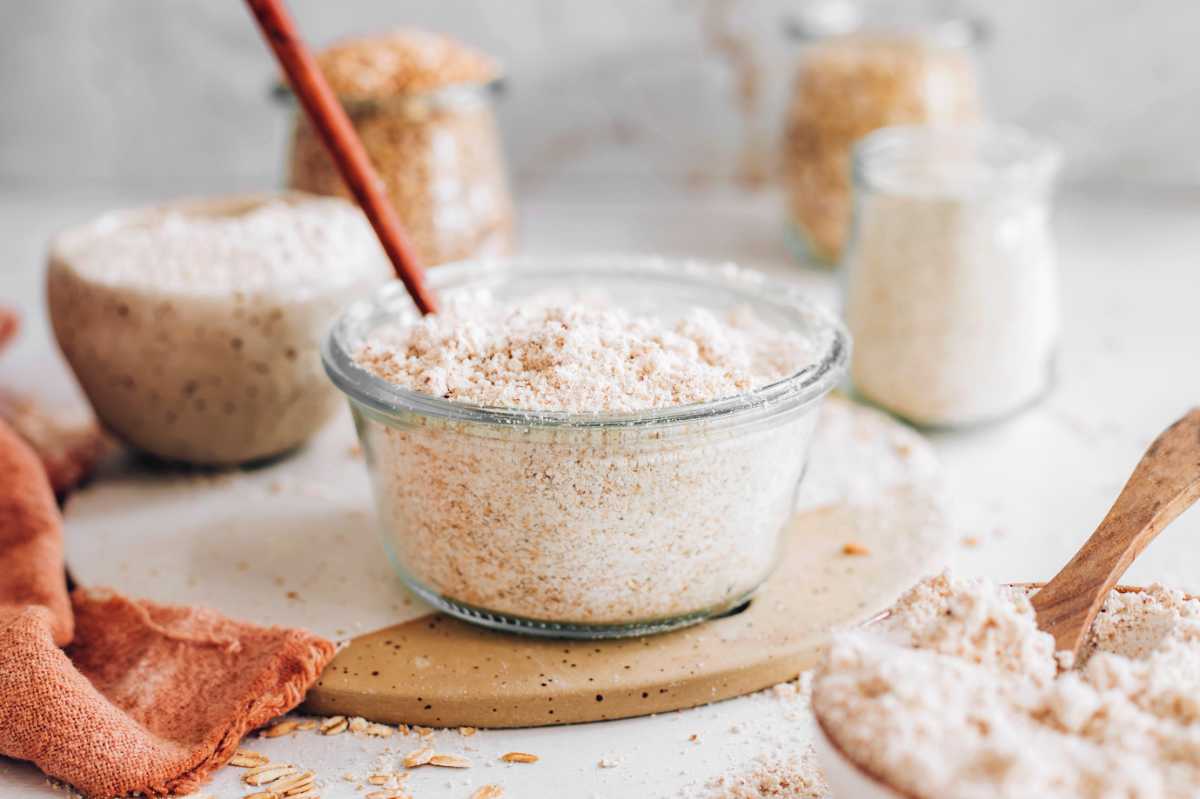
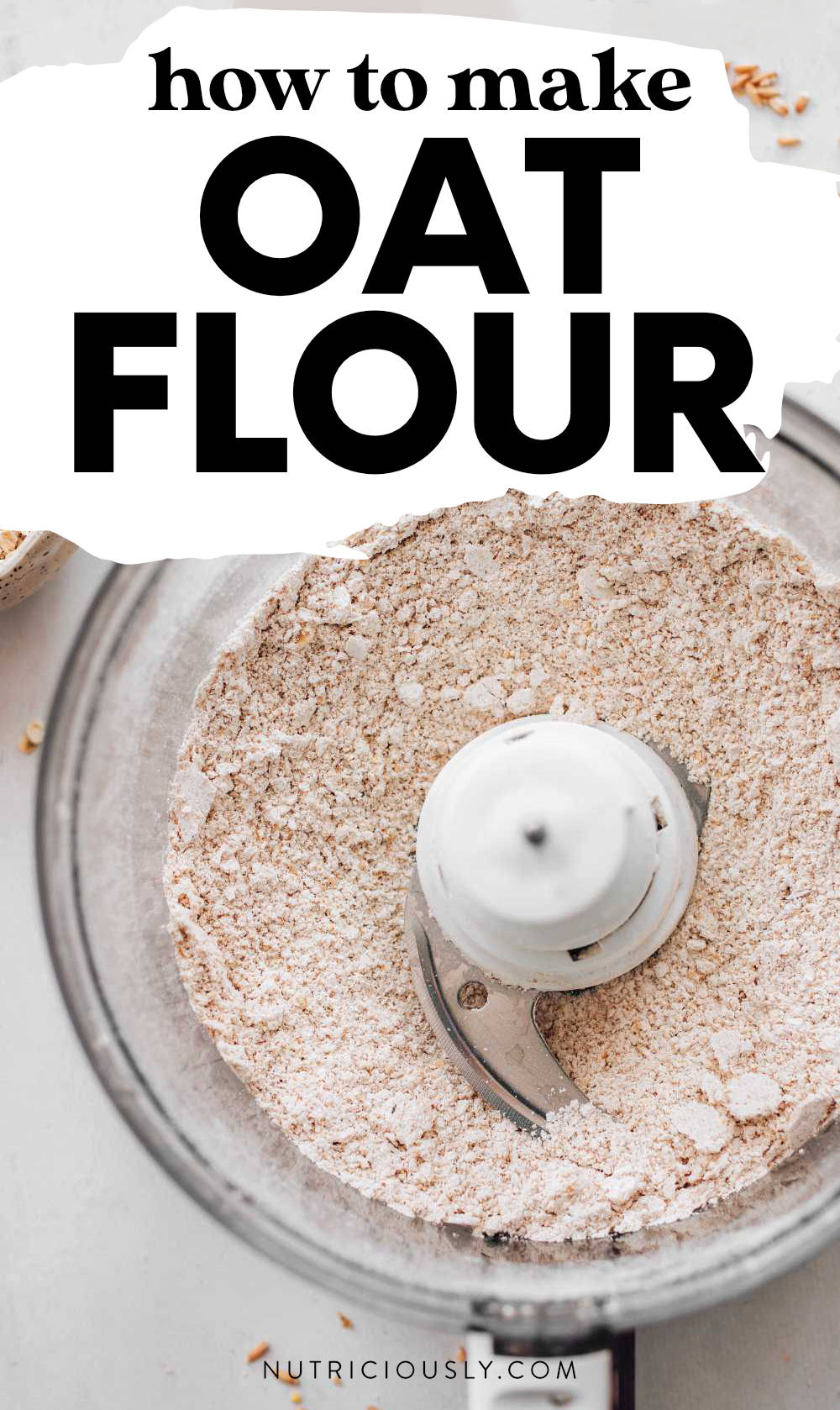
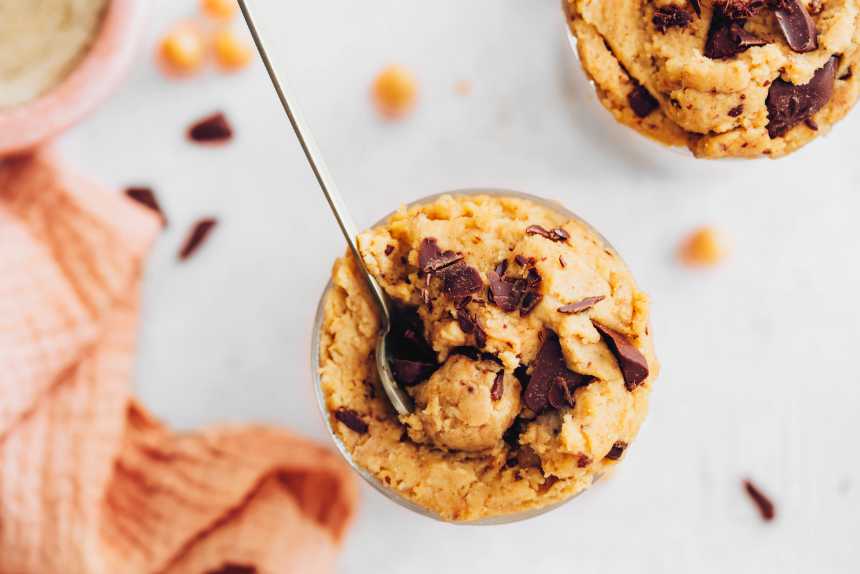
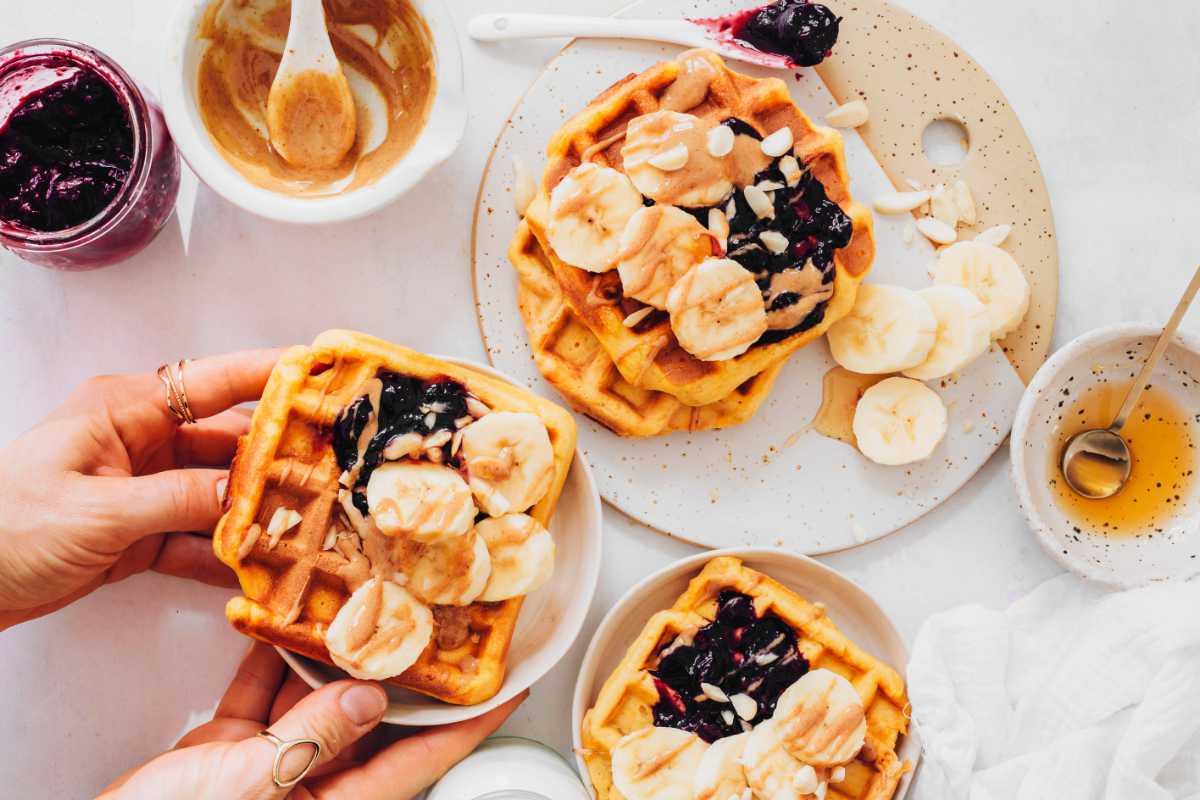
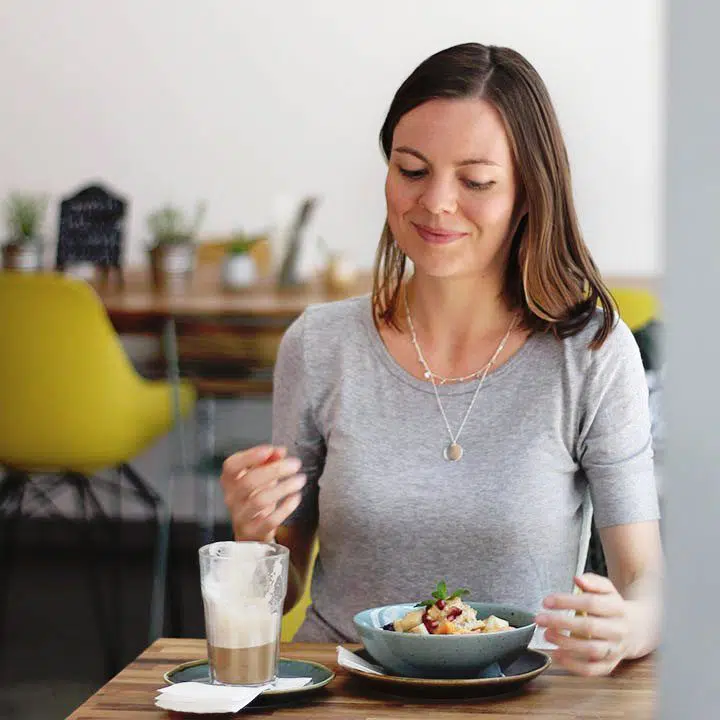
 Alena Schowalter is a Certified Vegan Nutritionist who has been a vegetarian since childhood and vegan since 2012. Together with her husband, she founded nutriciously in 2015 and has been guiding thousands of people through different transition stages towards a healthy plant-based diet. She’s received training in the fields of nutrition, music therapy and social work. Alena enjoys discussions around vegan ethics, walks through nature and creating new recipes.
Alena Schowalter is a Certified Vegan Nutritionist who has been a vegetarian since childhood and vegan since 2012. Together with her husband, she founded nutriciously in 2015 and has been guiding thousands of people through different transition stages towards a healthy plant-based diet. She’s received training in the fields of nutrition, music therapy and social work. Alena enjoys discussions around vegan ethics, walks through nature and creating new recipes.
Skip the store and make oat flour at home! It takes 2 minutes and saves you money.